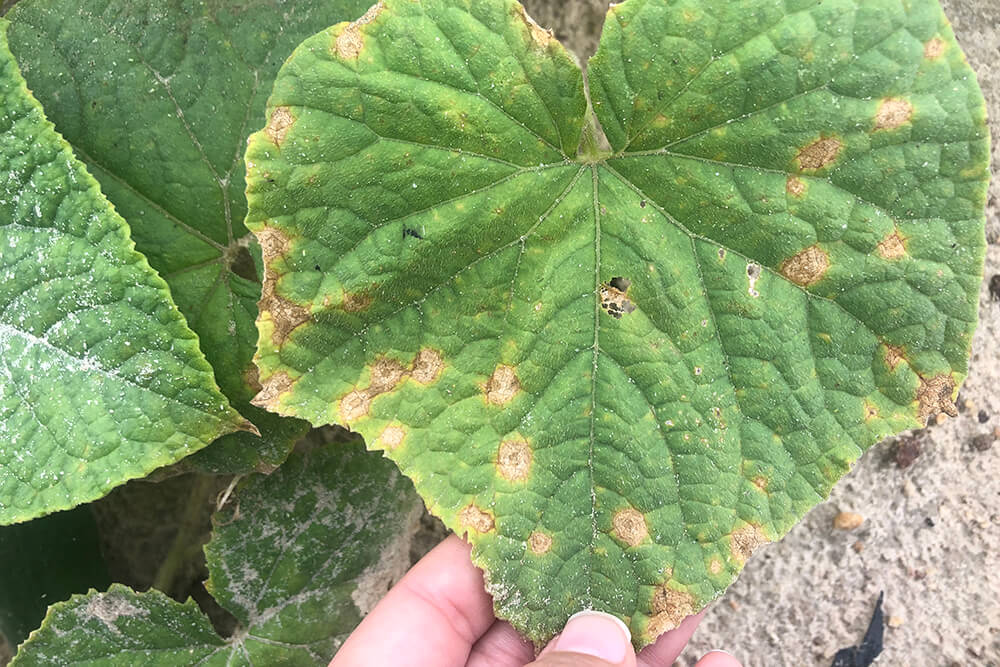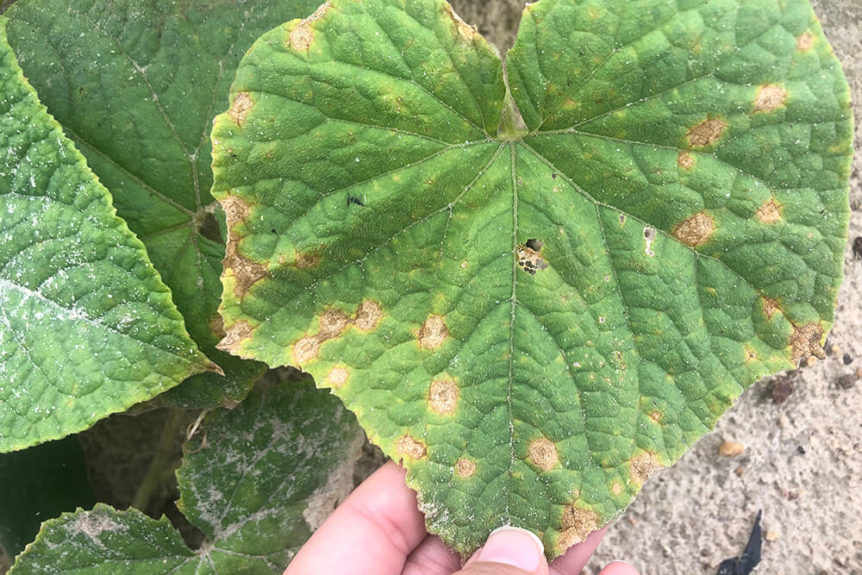
Southeast cucurbit producers face numerous challenges in production, leading to decreased profitability and less produce on grocery shelves. Weeds, insect pests and plant diseases are prominent biotic threats.
Among the plant diseases, one fungus — Colletotrichum spp., which causes anthracnose — is an emerging threat to watermelon and cucumber production along the east coast.
“There is a huge threat from this particular disease,” said Bhabesh Dutta, associate professor in the Department of Plant Pathology at the University of Georgia College of Agricultural and Environmental Sciences (CAES) and a UGA Cooperative Extension vegetable disease specialist. “Growers traditionally have been using Fungicide Resistance Action Committee (FRAC) 11 group of fungicides to manage this disease, but due to fungal populations insensitive to this fungicide, management has been difficult.”
Cucurbits include melons, pumpkin, squash and cucumbers.
Occurrences of fungicide insensitivity put the long-term viability and profitability of the cucurbit industry at risk, Dutta added.
Multistate Effort to Rescue an Industry at Risk
The U.S. Department of Agriculture (USDA) National Institute of Food and Agriculture recently announced that a CAES-led effort is among 21 research and Extension projects included in a $70.2 million Specialty Crop Research Initiative.
The selected research projects address key challenges of national, regional and multistate importance in sustaining all components of food and agriculture, including conventional and organic food production systems.
In the project “SAM: Sustainable Anthracnose Management for Watermelon and Cucumber Growers in the Eastern U.S.,” Dutta, project director, and co-project director Marin Brewer, William Terrell Distinguished Professor in the CAES Department of Plant Pathology, will lead a team that will undertake a coordinated, multistate effort to improve the understanding of recent anthracnose outbreaks. The team hopes to determine pathogen biology, population structure, host specificity and fungicide resistance profiles of the pathogen causing severe anthracnose outbreaks in cucurbit crops.
Florida, South Carolina, North Carolina, Virginia, Delaware, New York and the USDA Vegetable Laboratory in Charles, South Carolina, are also included in the four-year, $4.8 million project. Of that amount, $2.2 million will fund research at UGA.
“We have 18 scientists across multiple disciplines and seven eastern states, along with one USDA-ARS station, participating in the project,” Dutta said. The project will be guided by the stakeholder advisory panel that includes panels of scientists, seed and chemical industry representatives, cucurbit growers and state vegetable commissions.
Disease Background
Anthracnose infects all above-ground plant parts and can cause irregular brown spots on leaves and sunken black spots on fruit. While annual yield losses of watermelon and cucumber across the U.S. are difficult to estimate, conservative numbers range from several hundred thousand to millions of dollars, according to a statement to project stakeholders.
The research team will tackle sustainable anthracnose management with two broader goals for the end of the research process: addressing the pathogens by leveraging genomics and plant pathology and developing management practices and breeding efforts to provide a holistic solution for growers.
“One component is fundamental fungal biology and population genetics, and the other is more applied greenhouse and field-based research. At the end of four years, we hope to provide a complete package to our growers that will help them and the cucurbit industry to succeed,” Dutta said.
Learn more about this project at site.caes.uga.edu/duttalab.










